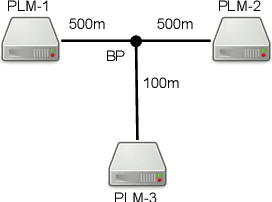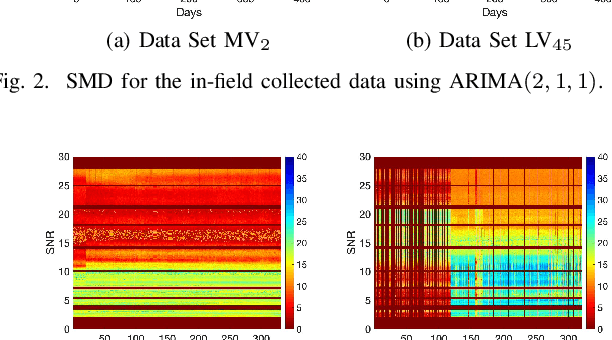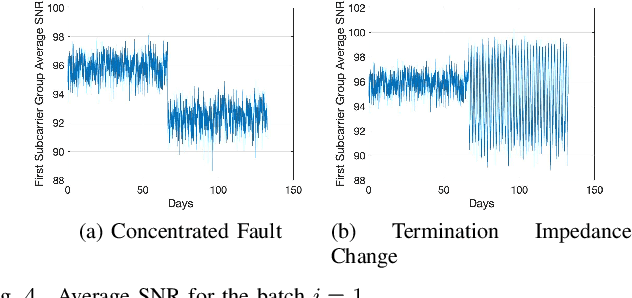Gautham Prasad
SmartPUR: An Autonomous PUR Transmission Solution for Mobile C-IoT Devices
Jun 21, 2023Abstract:Cellular Internet-of-things (C-IoT) user equipments (UEs) typically transmit frequent but small amounts of uplink data to the base station. Undergoing a traditional random access procedure (RAP) to transmit a small but frequent data presents a considerable overhead. As an antidote, preconfigured uplink resources (PURs) are typically used in newer UEs, where the devices are allocated uplink resources beforehand to transmit on without following the RAP. A prerequisite for transmitting on PURs is that the UEs must use a valid timing advance (TA) so that they do not interfere with transmissions of other nodes in adjacent resources. One solution to this end is to validate the previously held TA by the UE to ensure that it is still valid. While this validation is trivial for stationary UEs, mobile UEs often encounter conditions where the previous TA is no longer valid and a new one is to be requested by falling back on legacy RAP. This limits the applicability of PURs in mobile UEs. To counter this drawback and ensure a near-universal adoption of transmitting on PURs, we propose new machine learning aided solutions for validation and prediction of TA for UEs of any type of mobility. We conduct comprehensive simulation evaluations across different types of communication environments to demonstrate that our proposed solutions provide up to a 98.7% accuracy in predicting the TA.
Enhanced Hybrid Automatic Repeat Request Scheduling for Non-Terrestrial IoT Networks
May 11, 2023



Abstract:Non-terrestrial networks (NTNs) complement their terrestrial counterparts in enabling ubiquitous connectivity globally by serving unserved and/or underserved areas of the world. While supporting enhanced mobile broadband (eMBB) data over NTNs has been extensively studied in the past, focus on massive machine type communication (mMTC) over NTNs is currently growing, as also witnessed by the new study and work items included into the 3rd generation partnership project (3GPP) agenda for commissioning specifications for Internet-of-Things (IoT) communications over NTNs. Supporting mMTC in non-terrestrial cellular IoT (C-IoT) networks requires jointly addressing the unique challenges introduced in NTNs and CIoT communications. In this paper, we tackle one such issue caused due to the extended round-trip time and increased path loss in NTNs resulting in a degraded network throughput. We propose smarter transport blocks scheduling methods that can increase the efficiency of resource utilization. We conduct end-to-end link-level simulations of C-IoT traffic over NTNs and present numerical results of the data rate gains achieved to show the performance of our proposed solutions against legacy scheduling methods.
Power Line Communication Based Smart Grid Asset Monitoring Using Time Series Forecasting
Oct 19, 2021



Abstract:Monitoring grid assets continuously is critical in ensuring the reliable operation of the electricity grid system and improving its resilience in case of a defect. In light of several asset monitoring techniques in use, power line communication (PLC) enables a low-cost cable diagnostics solution by re-using smart grid data communication modems to also infer the cable health using the inherently estimated communication channel state information. Traditional PLC-based cable diagnostics solutions are dependent on prior knowledge of the cable type, network topology, and/or characteristics of the anomalies. In contrast, we develop an asset monitoring technique in this paper that can detect various types of anomalies in the grid without any prior domain knowledge. To this end, we design a solution that first uses time-series forecasting to predict the PLC channel state information at any given point in time based on its historical data. Under the assumption that the prediction error follows a Gaussian distribution, we then perform chi-squared statistical test to determine the significance level of the resultant Mahalanobis distance to build our anomaly detector. We demonstrate the effectiveness and universality of our solution via evaluations conducted using both synthetic and real-world data extracted from low- and medium-voltage distribution networks.
Synchronized SCUBA: D2D Communication for Out-of-Sync Devices
Apr 01, 2021



Abstract:Device-to-device (D2D) communication is an essential component enabling connectivity for the Internet-of-Things (IoT). SCUBA, which stands for Sidelink Communication on Unlicensed Bands, is a novel medium access control protocol that facilitates D2D communications on the sidelink for IoT and machine-type communication (MTC) cellular devices. SCUBA includes support for direct peer-to-peer communication on the unlicensed bands by operating in a time division multiplexed manner to coexist with the underlying primary radio access technology, e.g., long term evolution - MTC (LTE-M). A fundamental requirement in the current version of SCUBA is that the communicating devices are to be synchronized with each other so that timing occasions of the devices can be accurately estimated by each other. However, when the devices are out of sync with each other, which may be caused due to one or more of the devices being out of cellular coverage region or are being served by different base stations, typically observed in mobile devices, operation of legacy SCUBA fails. To this end, we design synchronization methods to establish successful SCUBA links between devices that are out-of-sync with each other. Due to the inherent timing discovery embedded in our method, our solution also extends the operating range of SCUBA by eliminating its reliance on timing-agnostic communication. We analyze and compare the performance of our methods in terms of power consumption and the resultant impact on device battery life to show the potential of our solutions.
 Add to Chrome
Add to Chrome Add to Firefox
Add to Firefox Add to Edge
Add to Edge